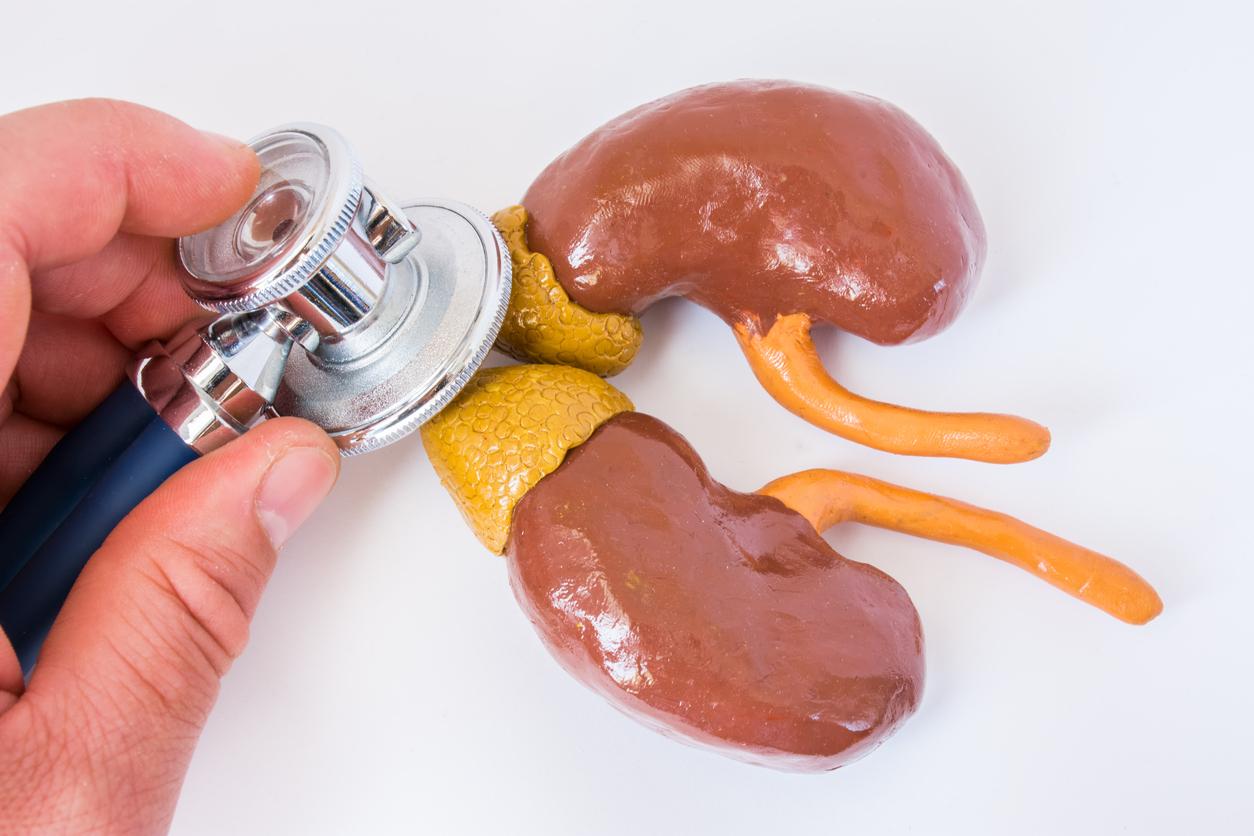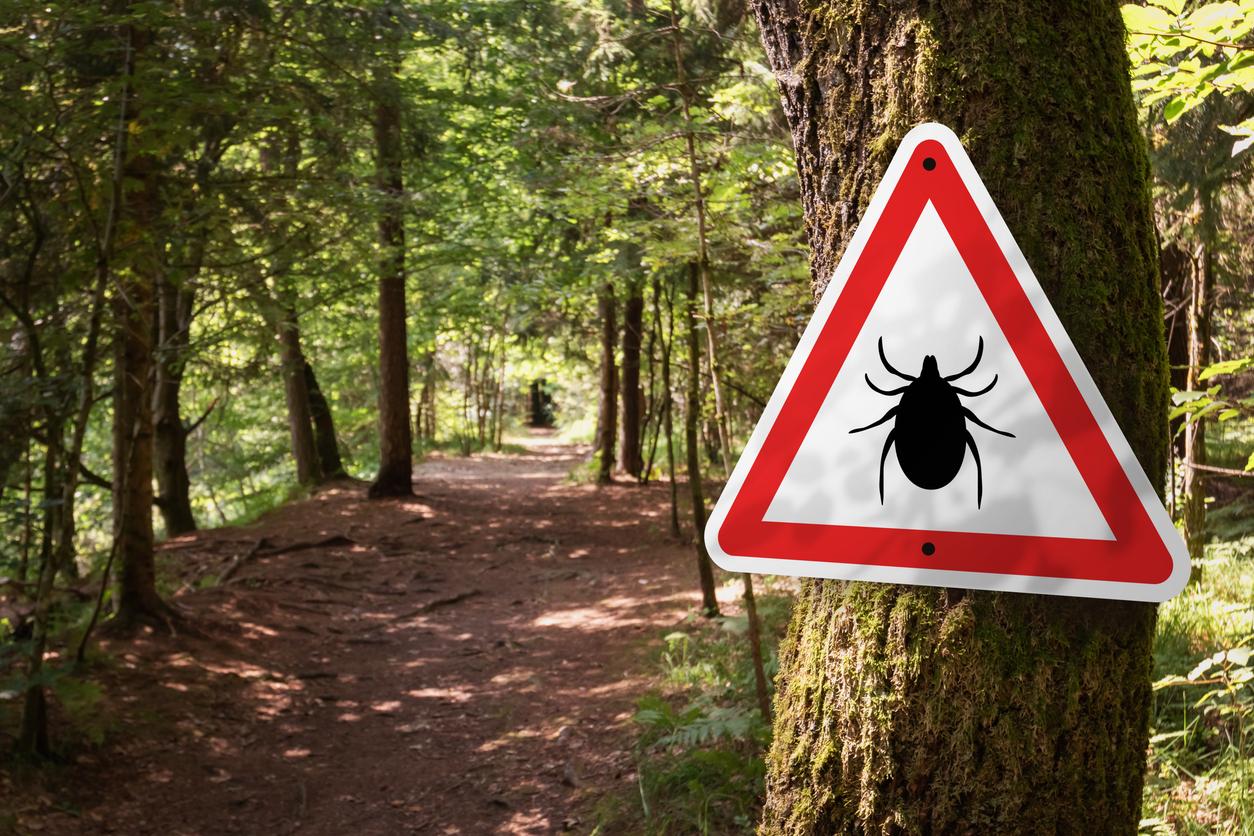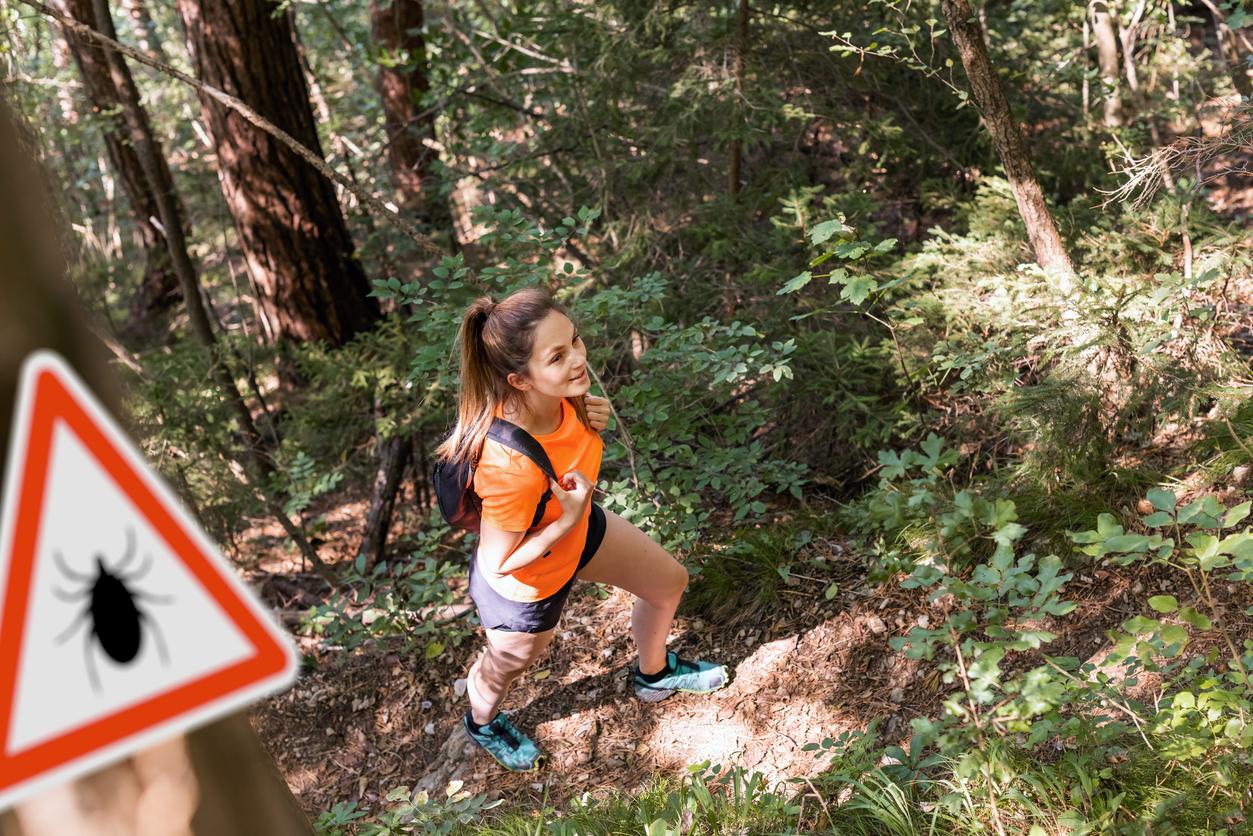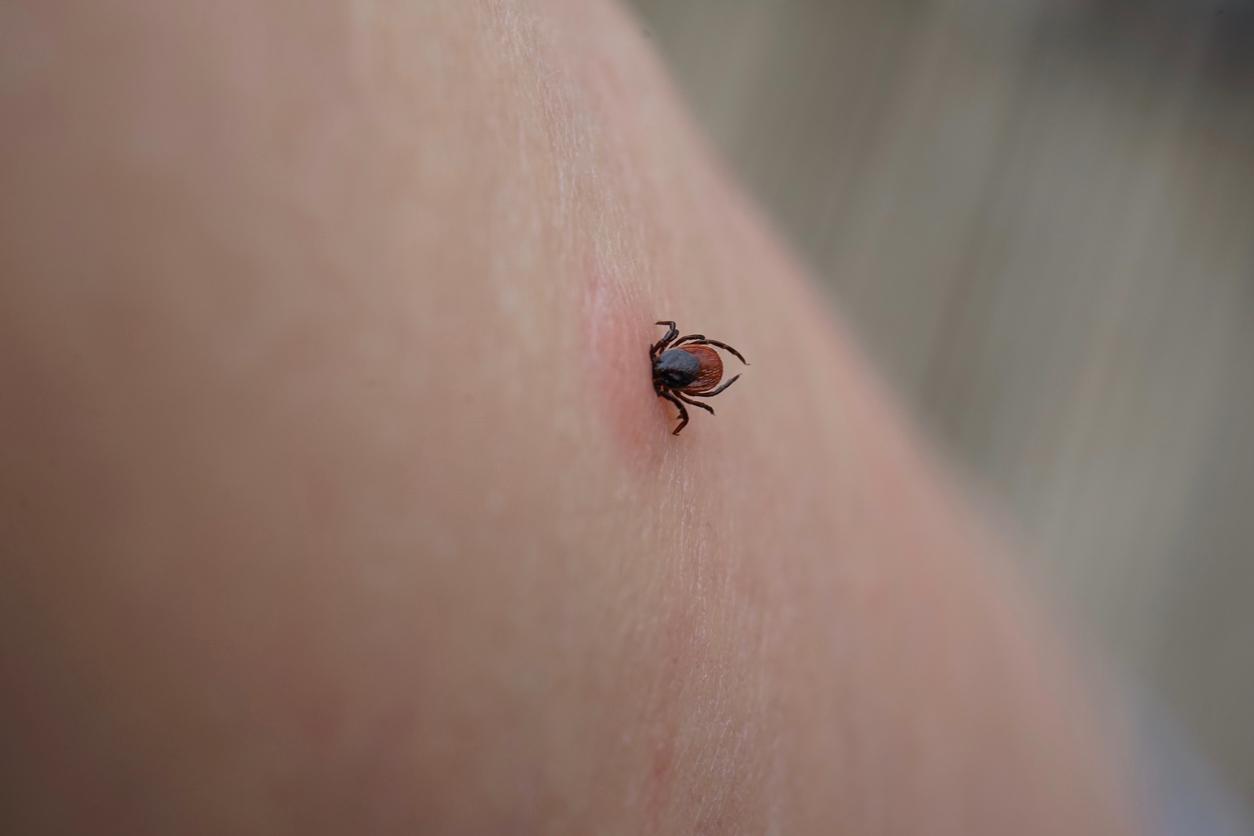The return of fine weather is accompanied by the resumption of walks in the forest, the privileged habitat of ticks, responsible for Lyme disease. With Dr. Alice Raffetin, head of the Lyme center at the Villeneuve Saint-Georges hospital center, we take stock of this disease which retains a part of mystery.

– Why Doctor: What causes Lyme disease?
Dr Alice Raffetin : Lyme disease is caused by a bacterium called borrelia which is transmitted by a tick, a small mite that lives in nature, rather in the undergrowth where it is neither too hot nor too cold and where there is some humidity. It is therefore a vector-borne disease that is transmitted to humans. Peak tick activity is mostly in the spring and fall, but with the much milder winters we experience, exposure to ticks can also occur during this season.
When you walk in the forest off the trails, in all seasons, you have to protect yourself against tick bites. The best way to avoid Lyme disease is to not get bitten!
– What to do when you get bitten by a tick?
When you get bitten, everyone is able to remove a tick on their own. You must have a tick puller, a small instrument sold in pharmacies that looks like a crowbar that you will slip between the skin and the tick and by turning gently, the tick’s head will unscrew on its own. Do not pull directly on the tick because there is a rostrum and pulling on it risks leaving the small spur that has penetrated the skin.
If you can’t remove the tick, you should consult. General practitioners and pharmacists know how to do this.
– How does Lyme disease manifest?
The disease progresses in three stages. The first stage, which occurs within four weeks of the bite, is a characteristic lesion called erythema migrans.
– What does this lesion look like?
It is centered on the point of the tick bite and it is a circular lesion which will extend outwards, it can be up to thirty centimeters in diameter, and above all it is painless. This is why it is absolutely necessary to inspect the skin at the level of the bite because it can go unnoticed, especially if it is in the back or the scalp.
You have to look carefully when you have gone to a place at risk of a tick bite, which is also painless. If a tick bite is spotted, it is removed, disinfected and checked in the days following the appearance of this famous erythema migrans.
– Why is it important to follow the evolution of the bite?
If it is important to diagnose this erythema as early as possible, it is because nearly 80% of the forms of Lyme are erythema migrans and this form is not serious: it is enough to give one to two weeks of antibiotics and one heals quickly and without sequelae. This avoids other stages that are more difficult to treat.
– What are these stages?
The other two stages – in fact they are the same except that the second stage appears within six months after the bite and the third after six months – there is the disseminated form where the bacteria affects the joints or the neurological system. For the joints, this mainly concerns the knee, this causes swelling and at the neurological level, the most frequent form is facial paralysis with part of the face which tends to sag.
For phases there, you really have to consult to avoid post-infectious symptoms. But even if it can take time to recover from disseminated damage, after two or three years, 95% of patients are completely cured.
– What are the treatments for these stages of the disease?
The treatment here also involves antibiotics but with longer prescriptions to ensure that the bacteria will be destroyed in compartments that are more difficult to access for a molecule. And often these antibiotics are prescribed intravenously for somewhat complicated articular or neurological forms.
– In Lyme disease, many patients experience lasting disorders. What is this due to?
The definition of persistent post-treatment symptom is when symptoms will persist for more than six months after the end of treatment. And what will last for a long time are all these symptoms that the doctor cannot see but that the patient will feel and these are real pains, it is not at all psychological! This can affect all the joints, with intense fatigue, sometimes tingling in the hands or feet. About 10% of people with disseminated Lyme disease will have persistent symptoms.
– Where does it come from?
What we do know is that it is not the bacteria that causes this. The bacteria, it was eliminated by the antibiotic treatment. But when it arrives in the body, this bacterium de-regulates the immune response and activates this response in a very intense way by causing important inflammatory cascades. It’s as if the body hadn’t understood that the bacteria was gone and that it was still on high alert.
There are then inflammatory molecules which are secreted in an abnormal way and which are responsible for pain. This is a phenomenon that we see in other diseases, especially in other post-infectious syndromes.
– What is the treatment for these persistent symptoms?
What would be great would be to have an anti-inflammatory molecule that would directly break these abnormal inflammatory cascades! But on this point, we are only at the research stage.
On the other hand, what we know is that we naturally secrete a very powerful anti-inflammatory which are endorphins. So the whole objective is going to be to get people back into sport, which may seem simple but is in fact very complicated with patients who are in pain everywhere! But a physical activity on prescription, therefore supervised by a doctor, makes it possible in fact to avoid the chronicization of the pain. You can also attend sessions with a physiotherapist.
– Yes, but this prescribed physical activity is often difficult to reconcile either with the effects of the disease or with the constraints of daily life…
Today there is a program called Sport Santé where anyone with 100% support can benefit from sports rehabilitation with specialist educators in sports halls covered by health insurance.
– And here we touch on a topic that is debating about Lyme disease, which is not recognized as a long-term condition and therefore not 100% covered by health insurance. Why is Lyme, in case of persistent symptoms, not considered an ALD?
It is not recognized as a long illness because there is no precise definition today of what a post-infectious symptom is, which we have not yet understood from a point from a scientific point of view the physiopathology, that is to say how it works and why some people have it and others do not, why certain infectious diseases such as Lyme or Covid will generate these symptoms and why others don’t do that at all.
Thanks to the Covid and the advances that the pandemic has made possible in terms of research, we could have answers in the years to come and perhaps the situation will change then.
If we can give a precise definition of these post-infectious symptoms, Health Insurance will be able to rely on it and validate whether or not patients have all the criteria for long-term illness care.
– In the case of persistent symptoms, is there hope for recovery and in what time frame?
These patients all recover, the prognosis is always very favorable, but the patients go through a tunnel for months or years and when you can no longer work, no longer have daily activities, everything has a major impact on a daily basis, c is unbearable. But if we know that there is light at the end of the tunnel and that we can be supported for rehabilitation, possibly psychological support, we will have won. But we will have to wait a bit for the research to progress and the time for research is not the time for urgency…
– Apart from the prescribed physical activity, with the limits mentioned above, what other treatments exist for patients suffering from the persistent form of Lyme?
Anti-inflammatories work quite well, there are also corticosteroids at the joint level. We also have quite good feedback on so-called brief therapies such as self-hypnotherapy which can be practiced by patients at home at the time of pain peaks.
– With symptoms comparable to those of persistent Lyme, many patients seem to be confronted with a diagnostic wandering. Do you confirm it?
What’s really going on in town, I can’t tell you. In the five reference centers created for this disease, we only see patients who are referred by their attending physician. This is where we see most of the people who have difficulty following up and this has undoubtedly helped to reduce the wandering of patients. But it is true that among all the people we receive with a suspicion of persistent Lyme, in the end there are not many whose condition is linked to a borreliosis infection.
– Can a suspicion of Lyme hide other illnesses?
When one suffers from articular pains, headaches, it is all the medicine which is concerned. The challenge will be to be able to give the right diagnosis with the right treatment or in any case the right course of care. And in all the patients that we see, there are 15% who have active Lyme and that we will treat with antibiotics.
Often these are scattered Lymes that have not been treated in town and that is why they are referred to us because our expertise is needed.
But there are also cases where they are potentially Lyme but which do not tick all the known cases and in this case the doubt must benefit the patient and we prefer to have him administer antibiotics in the hospital and ensure his follow up.
But 60% of the people we see have different Lyme diagnoses like inflammatory, rheumatological, neurological.















